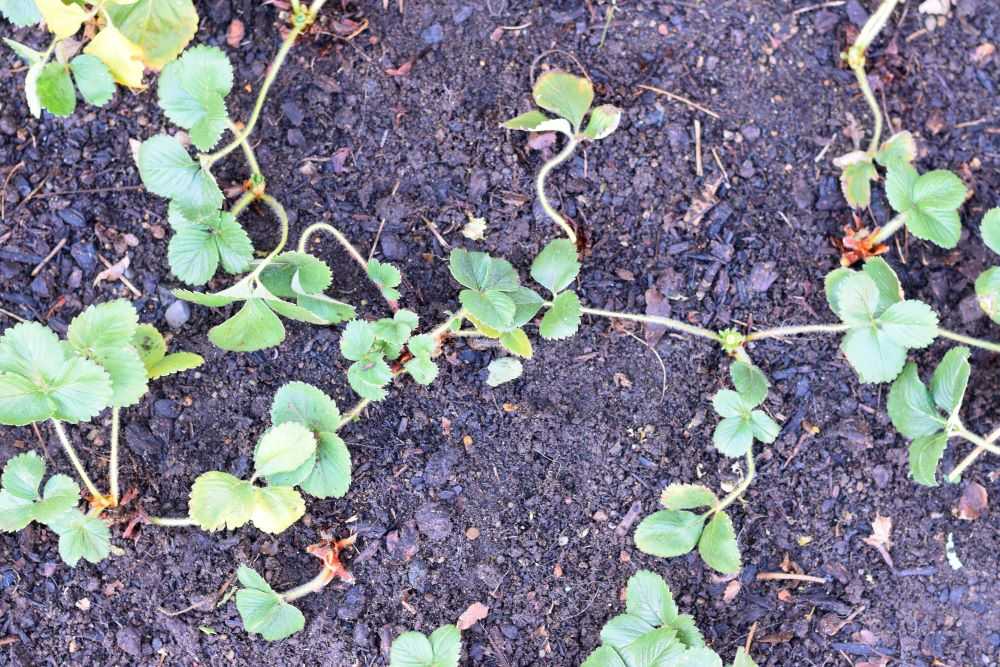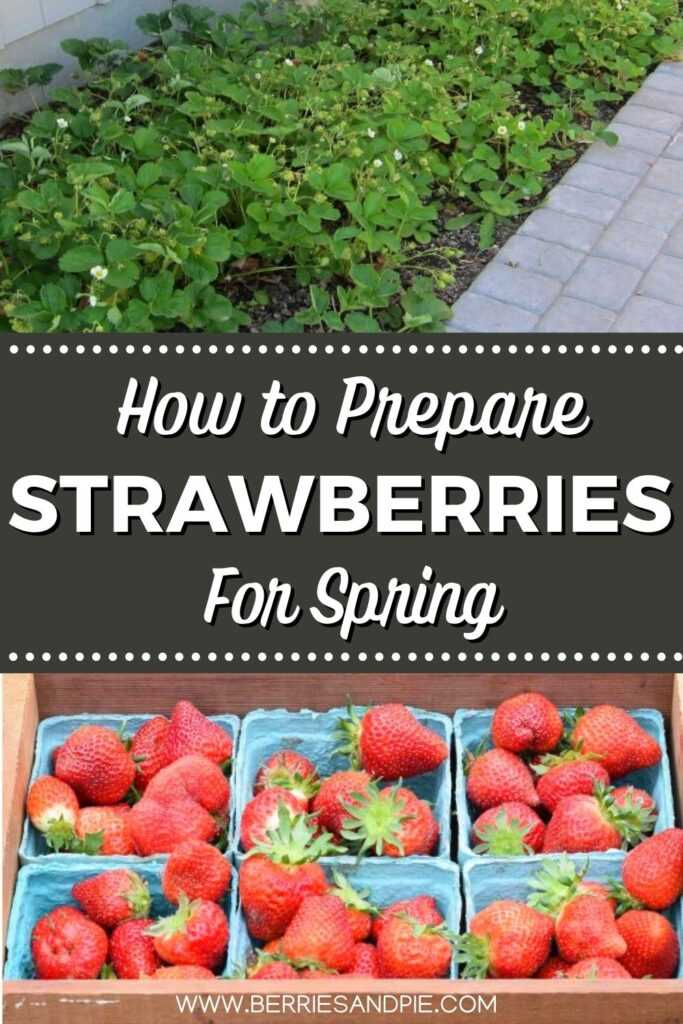Strawberries are a wonderful plant to include in your home garden! With proper care they can produce sweet juicy strawberries for many years. However, strawberry plants can take a beating over the winter. Leaves die and if you did not prune your runners the previous summer your berry patch can easily become a tangled mess like the picture below:

Today I will show you how to clean up your strawberry beds so they are ready for growth in the spring. Let’s get started!
Why to Clean Up Your Strawberry Beds
There are several reasons to clean up your strawberry beds before growth starts in the spring:
- Old leaves and plant materials left behind can propagate diseases.
- Snails and slugs can become a problem when there are a lot of dead leaves and places for them to hide.
- Dense plantings compete for light and nutrients, which will decrease productivity and lead to smaller berries.
- Pruning increases air circulation which will reduce the chance of diseases to spread.
When to Clean Up Strawberry Beds
One of the best times to prune strawberries is in the summer, right after the final harvest of the year. However, since leaves may die over the winter months, strawberries should be cleaned up and pruned a second time in late winter. This is past when any damage will occur due to cold weather but before they put on lush spring growth. Late January through early March is generally a good time.
How to Clean Up Strawberry Beds
Step 1: Pull up old plants
Strawberry plants die for a number of reasons and they need to be removed from your strawberry bed. You can recognize these plants because the leaves are dead and there is no green growth at the crown. Since strawberry plants naturally decline in productivity after about three years, also pull up any plants that are hard and woody and show little new growth.

Step 2: Prune away dead leaves, runners, and flower stalks
Dead leaves are of no benefit to the plant and can spread diseases. They also give a place for snails, slugs, and other pests to hide. Prune these off at their base, being careful not to damage the crown of the plant. Also remove older leaves that are very long and dull, or leaves that are red or yellowed. Leave the healthy green leaves growing close to the crown of the plant.

Sometimes old flower stalks are still attached to the plant. They serve no purpose at this point so make sure to remove them as well.
Also remove runners, or the stems that go between plants, as these can become rather tangled. If the daughter plants are rooted and healthy, I usually leave these in the ground but take them out if they look unhealthy or if they have not rooted properly.

Step 3: Pull up plants that are overcrowded or not where you want them
In the summer months strawberries send out a multitude of runners in every direction. If not pruned off these take root and form a new plant. Sometimes these runners end up in a good location, and sometimes they are not where you want them. Do not be afraid to dig these up and transplant them elsewhere in your planting bed. For example, the strawberry plant below ended up too close to my walkway so I carefully dug it up and moved it to a different location.

Also remove strawberry plants that are too close to each other. Strawberries that are too close together they will compete for light and nutrients which will decrease productivity and lead to smaller berries. Dense plantings also reduce air circulation, trap moisture, and spread diseases.
How should your strawberry plants be? Plants should be spaced at least 6 inches apart so they have plenty of room to grow.
If you find plants too close together carefully remove one of them. If the plant looks healthy you can move it to another location in your strawberry bed. Or, you can plant it in a pot or share it with a friend.

Eventually this is what we want to end up with: healthy strawberry plants, spaced at least 6 inches apart, with dead leaves and runners removed. This is such a big difference from where we started out!

Growing Tips
Now that your strawberry beds are cleaned up, here are a few more growing tips:
Add Mulch
When you are finished cleaning up your strawberry bed you can add some mulch around the base of your strawberry plants. This will help to keep the soil moist, prevent disease from spreading as easily, regulate the soil temperature, and keep the berries off of the dirt. Clean straw works well for this.
Water Regularly
Spring rains usually provide enough water for your strawberries but make sure to water them if you have a dry spell. The soil should be kept moist but not overly soggy. Strawberries need about an inch of water per week.
Wait to Fertilize Until After Harvest
As tempting as it is, now is not the best time to give strawberry plants a big dose of fertilizer. This can lead to too much leafy growth and poor berry production in the spring. The best time to fertilize your berry patch is after they are done producing berries for the year in June or July.
Final Thoughts
There you have it! Now that you know how to clean up your strawberry beds you will be rewarded with beautiful sweet strawberries in the spring. They are perfect for eating fresh, strawberry shortcake, or homemade strawberry jam! As always, Happy Gardening!


Be sure to pin for later!


Leave a Reply